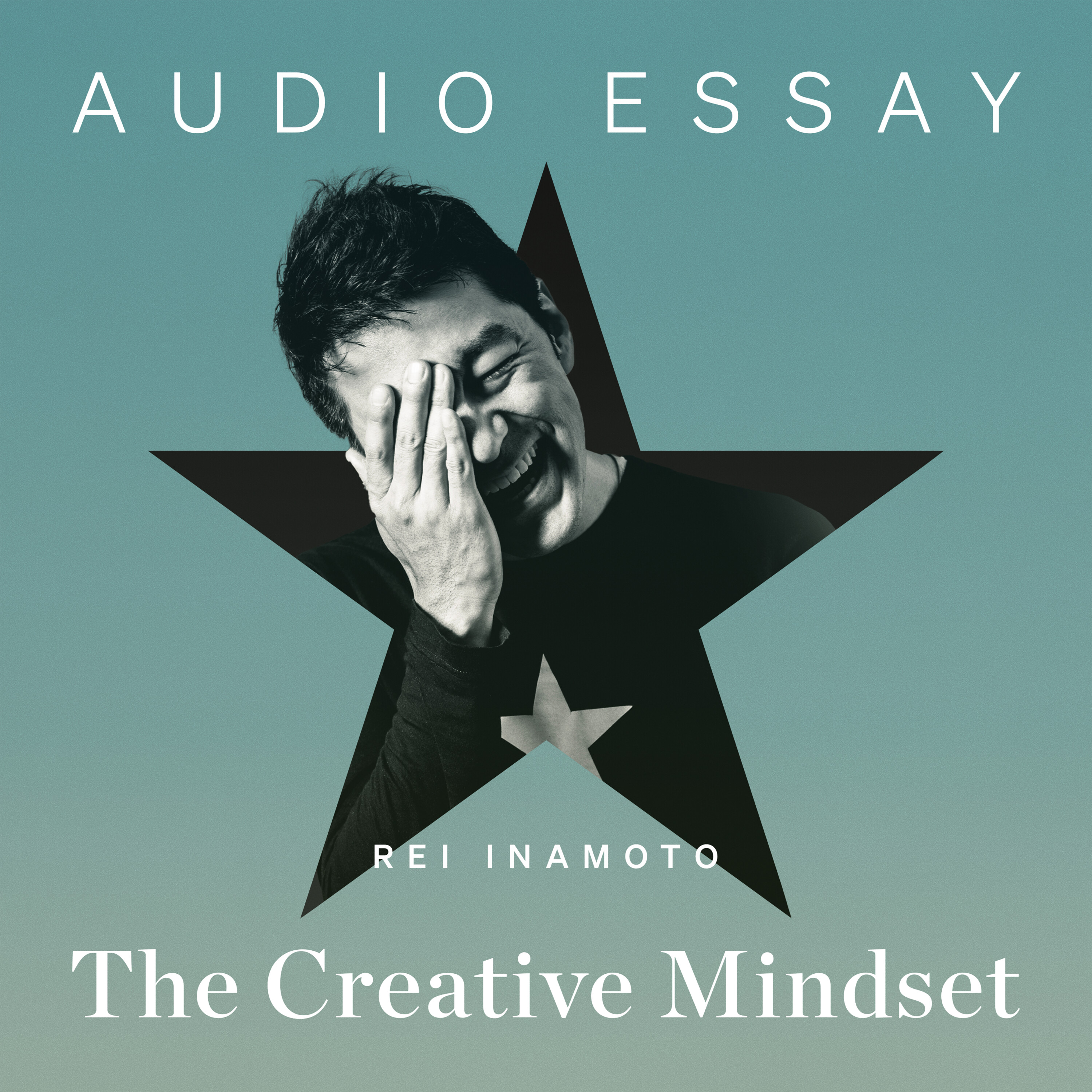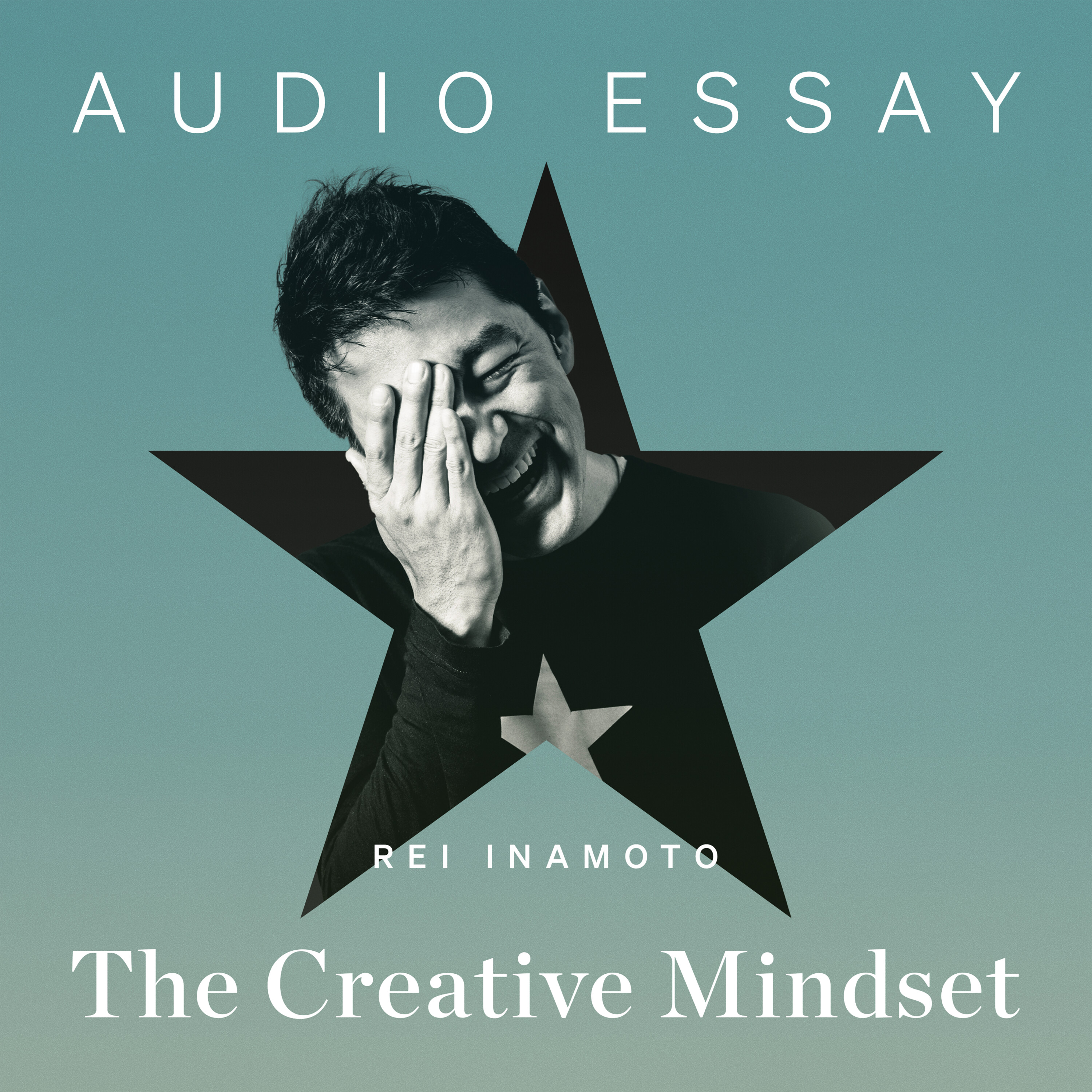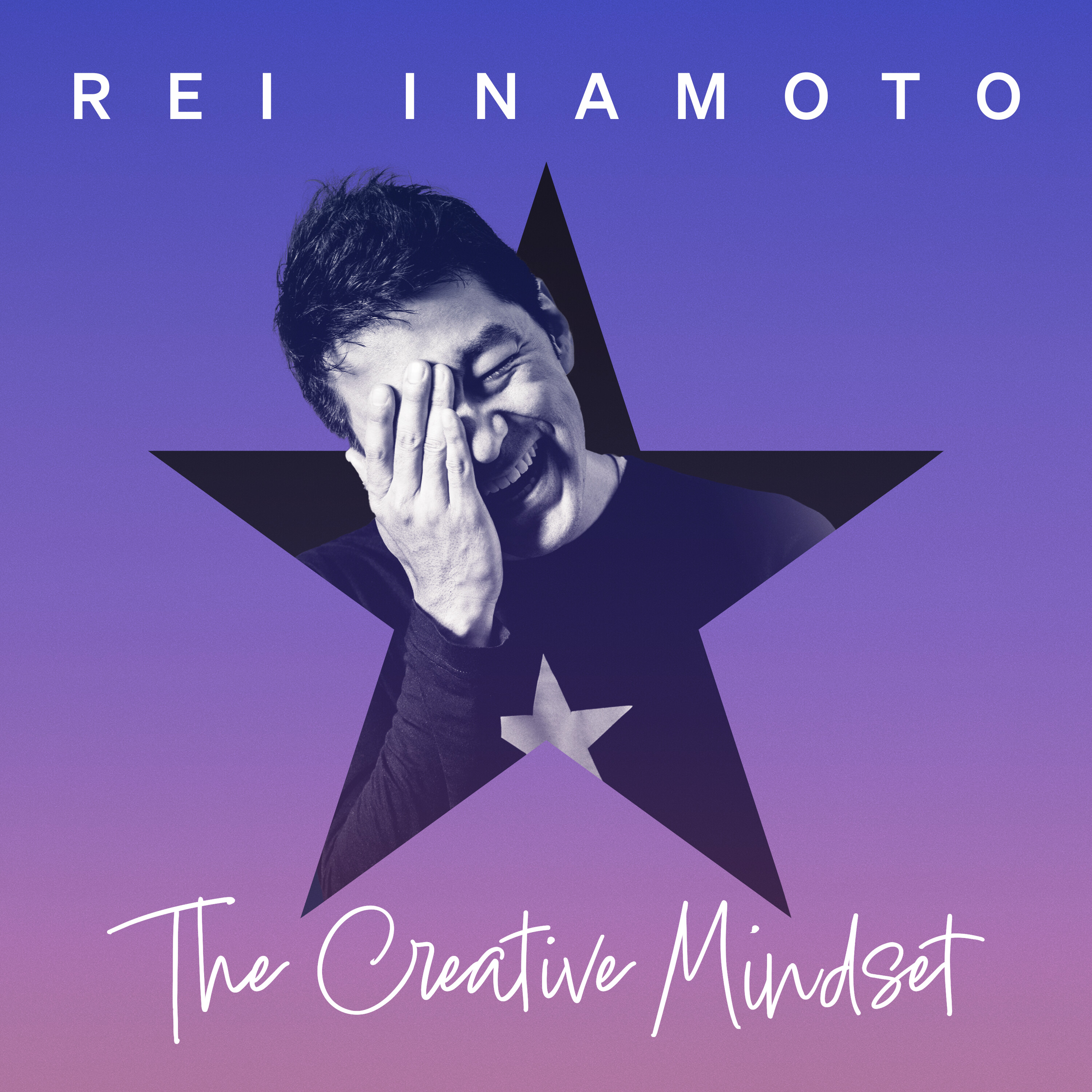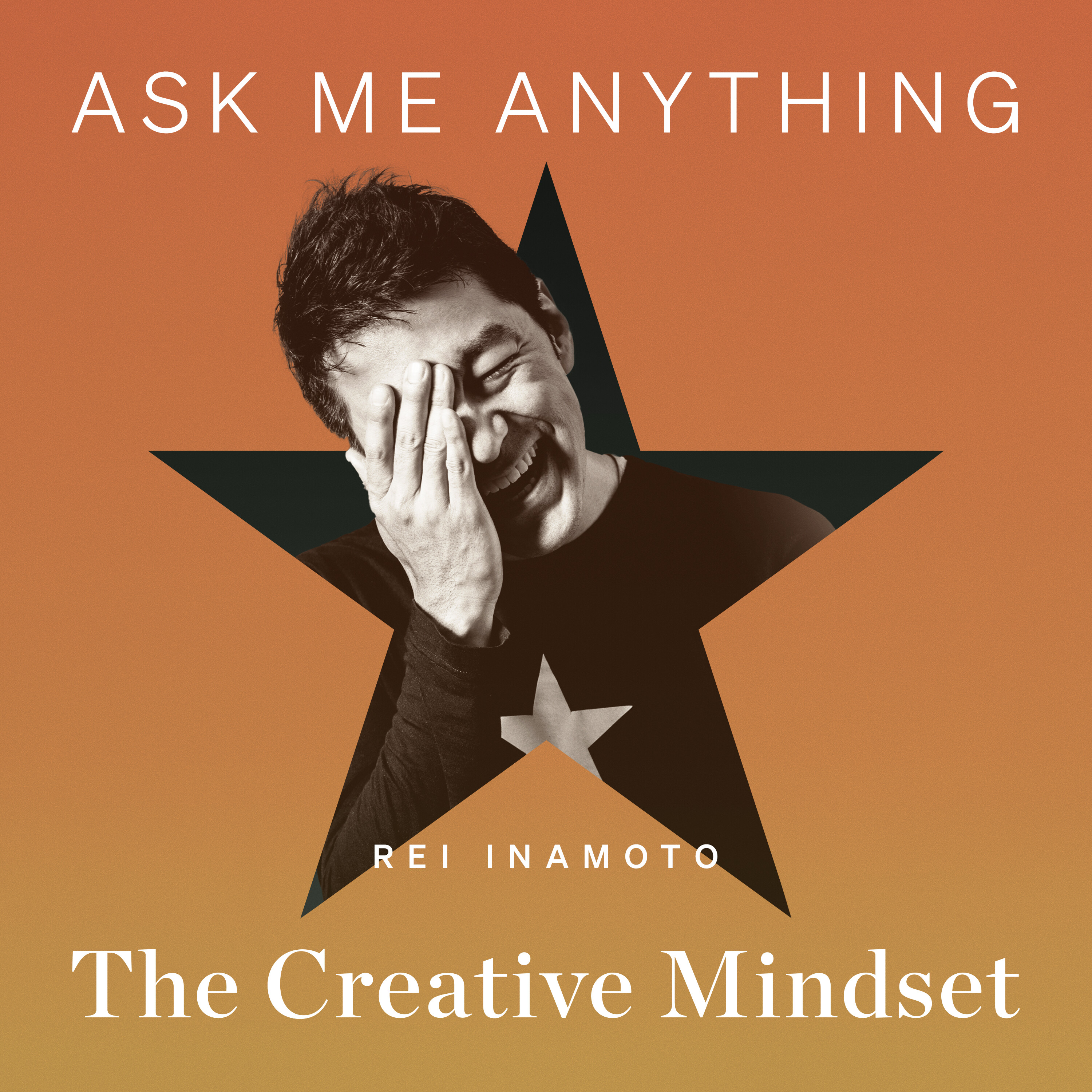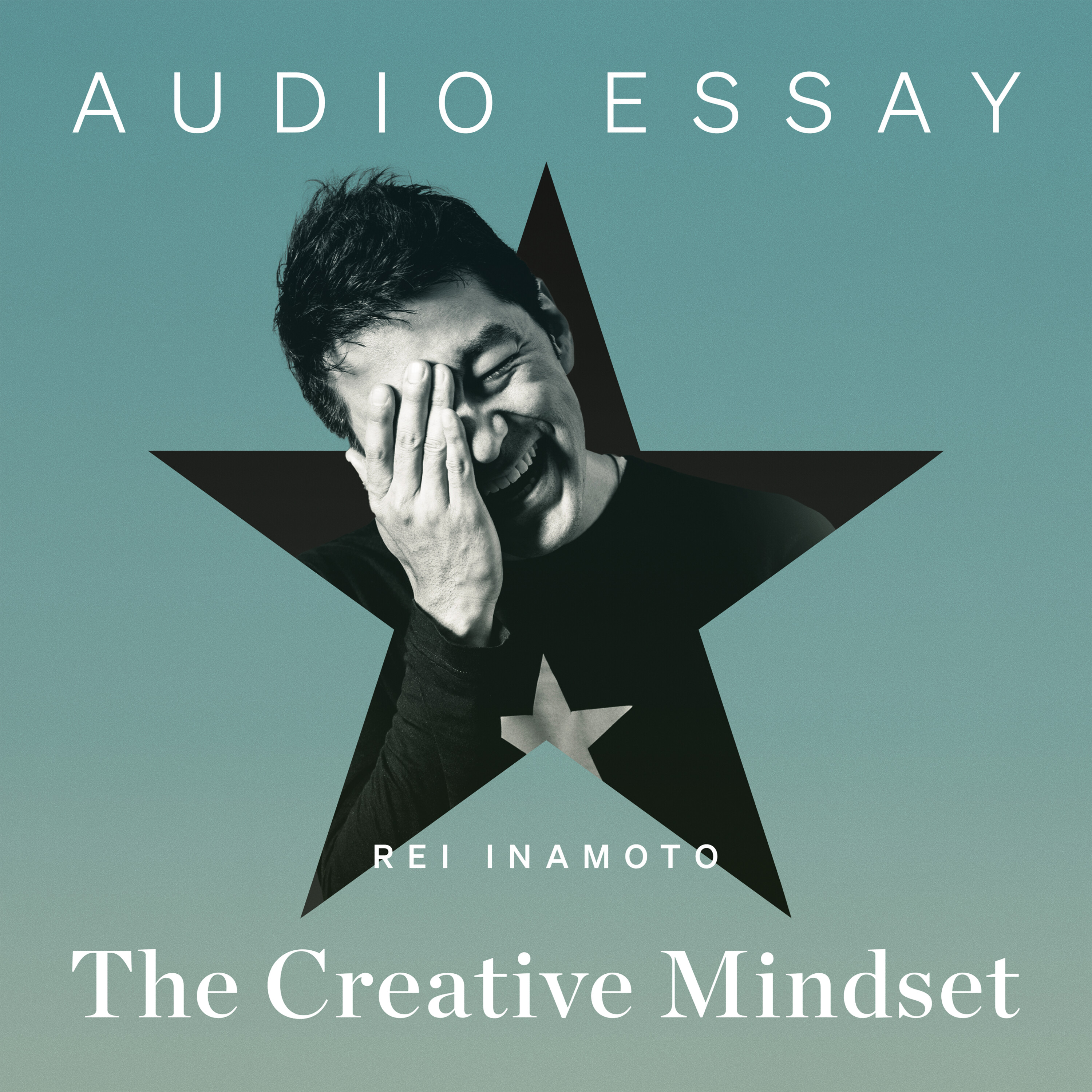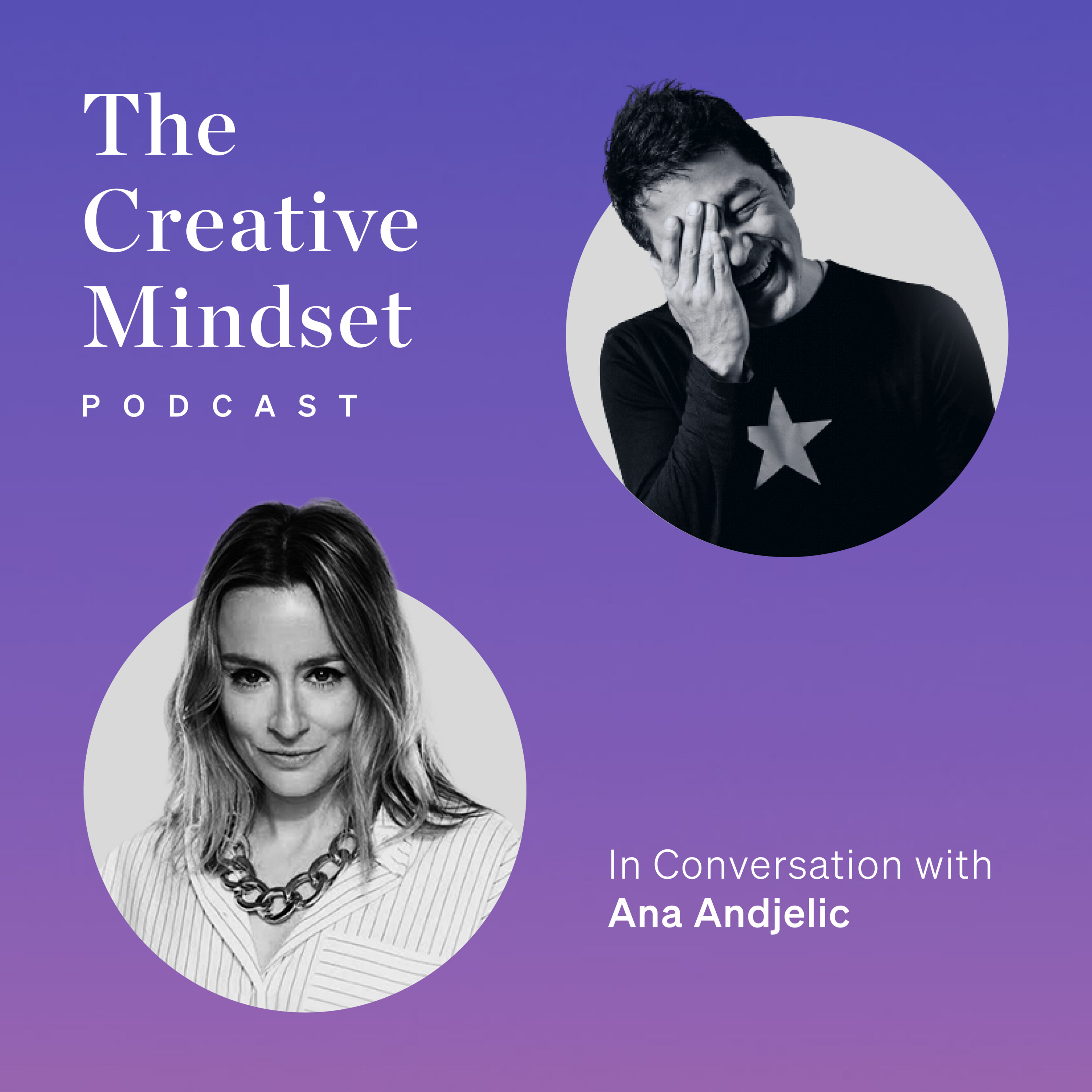00:03
This is Reinamoto's Podcast, The Creative Mindset.
Welcome to The Intersection, a new segment and audio version of my essays exploring what the
future holds at the intersection of creativity and technology. I am Reinamoto, the founding
partner of I&CO, a global innovation firm based in New York and Tokyo. Based on the conversations
that I have with the top creative practitioners from various industries, I write a weekly essay
to dig deeper and analyze where we may be headed as creative and business professionals.
Although we talk a lot about AI and technology, we'll be asking a human voice actor to record
these episodes. We'll be bringing this segment as a bonus episode to you. So let's get started.
Branding You
As an immigrant woman in design tech, I feel like I might have hit a ceiling in terms of building
a personal brand. One of the readers in my newsletter reached out to me,
replying to the piece I wrote recently about starting a company as a creative,
in which I shared several pieces of advice from my industry friends and colleagues.
While pondering about going out on my own, I received advice from Brett Lovelady,
the founder of Astro Studios in the U.S. and an industrial designer extraordinaire.
Build your brand, was the advice. The reader continued, I speak at conferences,
write a sub-stack, mentor accelerator programs, and more, but I can't seem to break through to
get a meaningful media feature. Fastco, Wired, Forbes, TechCrunch, etc., seems like all of that
is guardrailed for executives of big companies, those willing to shill $2,500 to be a part of
the paid council, and people with a giant influential network. Is the only way to get
your thoughts out through hiring a PR person? Do you happen to have any advice for someone like me?
When thinking about this reader's question, the analog that came to mind was Marie Kondo,
a Japanese organizing consultant also known as Konmari, author and most famous for her Netflix
series, Tidying Up with Marie Kondo. While there are thousands of well-known individuals from whom
we could take cues and an endless list of how-tos on building your personal brand,
how Kondo built her own provides us designers with useful hints. She turned a mundane and
intangible act of tidying up into a tangible profession and built her brand. There are four
steps Kondo went through that are parallel to how we can think about and elevate what we do as
designers. To start off with, everyone wants a clean, tidy home or office. The need is obvious
03:07
and what she offers is immediately relevant. However, that could easily be relegated to a
cleaning service. There is a limit to how much one can charge for a cleaning service.
At the danger of sounding like an elite, this occupation becomes a race to the bottom.
In design, there are plenty of designers and cheap services out there that would give the
customers, say, a logo for a few hundred dollars or even for free. Services like Canva and Wix
provide non-designers tools to design logos on their own. Not only can competing on price
when providing a design service become a race to the bottom, but it's also a race to irrelevance.
As a child, Kondo says she would look at her mother's magazines about home organization
and become interested in tidying up. During her college days, whenever she visited her
friend's apartments and saw some messiness, she would offer to tidy up. Also, while doing
secretarial work to make some extra cash, she happened to notice a very messy desk of a manager.
One day, she offered to tidy his desk up. Sounds a little OCD, but that's a prerequisite for us
designers. The good news about this kind of service is that it could be a recurring business.
As no room stays clean and we could generate repeat customers. But this is where she found
an insight that eventually became the crux of what she would be known for and around which she
built a personal brand. While she started getting paid for her cleaning services that she could
repeat, she pivoted to teaching her customers how to tidy up and organize better so that their homes
and offices would stay tidy. An obvious insight here is everyone wants a tidy home or office,
but a more relevant insight is everyone wants a tidy home or office that stays tidy.
Instead of becoming just another cleaning service provider, she positioned herself as an
organizational consultant. Rather than racing to the bottom, she started to elevate her service
to a higher level. In addition to her insight, Kondo had a peculiar way of organizing.
She would hold each item to her heart to see if it would spark joy, which she later turned into
the Konmari method. Many people take joy in having a clean home or office, but she may be the first
06:01
person to turn tidying up into a method by looking for joy in items she and her customers owned.
Quite unique indeed. But the Konmari method wasn't born overnight. While working as an
office worker, and after she started to consult on the side as a hobby, she decided to attend a
book writing course at her friend's suggestion. That led to the eventual publication of her
international best-selling book, The Life-Changing Magic of Tidying Up, in which she methodically
described her rules of organizing. Ask yourself if it sparks joy. It's rule number six of her six
rule method. Now, there are a few elements to her success that made her an international phenomenon.
First, a different idea. Tidying up isn't all that desirable as an idea, but a life-changing
magic of tidying up sounds intriguing. Not everyone wants to tidy up, but if tidying up
could change our lives, wouldn't we all want that magic? Asking an object if it sparks joy
and then thanking it is admittedly quirky and even a little weird, but that did differentiate Kondo.
I emphasize different here. Anyone can have an idea. Some can have better ideas. Coming up with
different ideas is the hard part. As designers, we need to relentlessly pursue ideas that are
different, not just better. Second, articulation. The crucial step she took was articulating and
documenting her way of tidying up. It's one thing to have ways of doing things in our heads,
but once we verbalize and document, those ways become more concrete and tangible.
More importantly, it's the way she articulated it. A book titled A Better Way of Tidying Up
might make some people curious, but the life-changing magic of tidying up
is much more imaginative and inspiring. In addition to her articulation of her
method being unique, the translation is absolutely genius. Each language has its
nuance and peculiarity that often gets lost in translation. Spark joy is actually not the
translation of the original Japanese version of Tokimeki. If you look up this word in a dictionary,
it provides several awkward translations. Combining spark and joy to convey the meaning
of Tokimeki was a brilliant touch of the translator. This leads to my third point,
09:06
naming. Kondo happened to have a name that was easy to pronounce for non-Japanese speakers.
Kondo's first name, Marie, is actually pronounced Marie, but to the English speakers,
it just looks like the Western name Marie and is easy to pronounce. And her nickname,
Konmari, is equally so. It's quite common in Japanese to conjugate the first few letters of
first and last names to give shorter nicknames, not just to people, but services or brands.
Konmari was a nickname her friends gave by combining Kondo and Marie and shortening it.
Starbucks, for instance, in Japanese becomes Tsutaba, and Don Quixote, a massively successful
discount store in Japan, becomes Donki. Not only was her method of finding what sparks joy
when tidying up unique and differentiated, but it was also unexpectedly simple and easy to remember.
Conceptually and phonetically, the fact that the Konmari method would be easy to pronounce
for foreigners may not have been intentional, but it later made a big difference for her personal
brand, especially outside of Japan. Naming our ideas in a simple, memorable way can go a
surprisingly long way. Once she elevated what could have been a run-of-the-mill cleaning service
and organizational consultation to a new level, she paid attention to how she presented herself.
She dressed in a reserved outfit that would exude a clean image and carried a hairstyle that was
tidy and distinctive, but not overstated. She herself became the expression of her ideology
and established an easily recognizable visual presentation.
Dressing a certain way or having a distinct visual style is a common tried and tested
trick in the entertainment world, but isn't rare in the corporate world. In modern times,
Steve Jobs is the top example of someone who dressed one way and one way only, with a pair
of John Lennon-inspired round glasses that added to his signature look. This was perhaps a conscious
jab at his nemesis Bill Gates, who had a more nerdy style. The disgraced Elizabeth Holmes
is another person in a more recent memory who manufactured not only her image, but also her
peculiar low-pitched voice and achieved enormous brand recognition. She knew what she was doing,
as she later changed her appearance during her trial for fraud to distance herself from her
12:01
previous personal brand. It didn't quite work this time. In the design sphere, we can also
spot individuals who have established particular ways of presenting themselves. In addition to
consistently producing beautiful products, a closely trimmed head, a soft-spoken British
accent, and a t-shirt are elements that made Jonathan Ive, the longtime design collaborator
of Steve Jobs and former head of design, the most well-known iconic designer of our time.
After Ive, can we name another designer from Apple? I don't think so. A visual presentation
of oneself is just a clean and consistent punctuation of a sentence. Needless to say,
what's critical is the idea or the piece of innovation. When that is made visible,
it can be exponentially more powerful. Tinker Hatfield, a legendary sneaker designer who is
credited with designing some of the most famous consumer products in modern history,
was phenomenally skilled at visually presenting innovation. Nike Air, a shock absorption
technology in running shoes, was designed in the 1980s by Hatfield and his team and has been
one of the most successful product brands. The idea of cushioning so soft it's like running on
air is immediately visible in its design and is easily understood. It telegraphically presents
and tells us what it is and does for us. One can gain recognition overnight,
but overnight recognition doesn't build a personal brand. Kondo became a well-known
figure in her 20s in Japan first. Now, for over a decade, she has maintained her consistent
presentation. As long as she's been practicing as a professional organizational consultant,
well before she became an international figure, she had her look. She must have had an urge to
change her hairstyle, but I praise her dedication to her personal brand. Karl Lagerfeld, Rei Kawakubo,
and Yoji Yamamoto are some of the most iconic design figures with specific visual presentations
of themselves that many of us recognize. Hairstyles, glasses, accessories, and outfits
are all elements that can build personal brands beyond the products or things we as designers
become known for. However, it must be emphasized that these visual elements and styles are merely
a cherry on top. We must first be known for what we do and do it consistently, not how we appear.
15:02
In Kondo's case, she established a narrative around organizing and sparking joy, and she's
been very consistent in that narrative. More recently though, she admits that as a mother
of young children, keeping her house tidy is no longer her priority, but that doesn't mean she
is parting ways with her brand. She started to expand the idea of sparking joy into relationship
consultation and maintaining her consistency. Nothing stays relevant forever, so we must find
ways to evolve. While it's important for us to keep up with the change around us,
it's also important to have certain ideas and philosophies that we can keep consistent.
There is a fine balance we have to keep looking for between relevance and consistency.
To answer the original question from the reader, I can't seem to break through to get a meaningful
media feature. Is the only way to get your thoughts out through hiring a PR person?
A media feature is nice, but I would encourage you to ask yourself the following.
1. Relevance. Is my service relevant to my clients?
2. Differentiation. How is my service different from others?
3. Presentation. How am I presenting my service and myself?
4. Consistency. Am I doing these things consistently?
Make sure you have a good answer to each and a strong body of work to prove. That should lead
you to what you wish. As designers, we must keep asking these questions and evolve constantly to
maintain our relevance. Keep in mind, however, that that's only a means to an end. To borrow
President Barack Obama's quote from a recent interview,
I started writing this newsletter last summer in 2023 as a way to organize my thoughts that come
from various conversations with many creative practitioners. Over the course of several months,
I see and notice new patterns and new insights gained from multiple people,
and I take the time to organize and write them down so that they can be useful and hopefully
helpful to you as listeners and readers. If you're listening to this on Spotify,
18:04
there's a Q&A field, so please do send us your questions and comments.
And if you like our podcast, please leave us a 5-star rating. We'll be so grateful.
I'm Rei Inamoto, and this is The Creative Mindset. See you next time.
